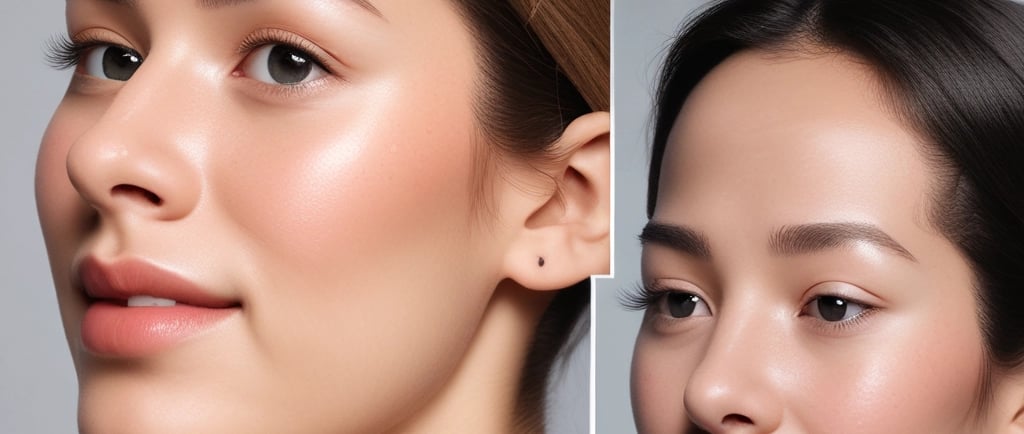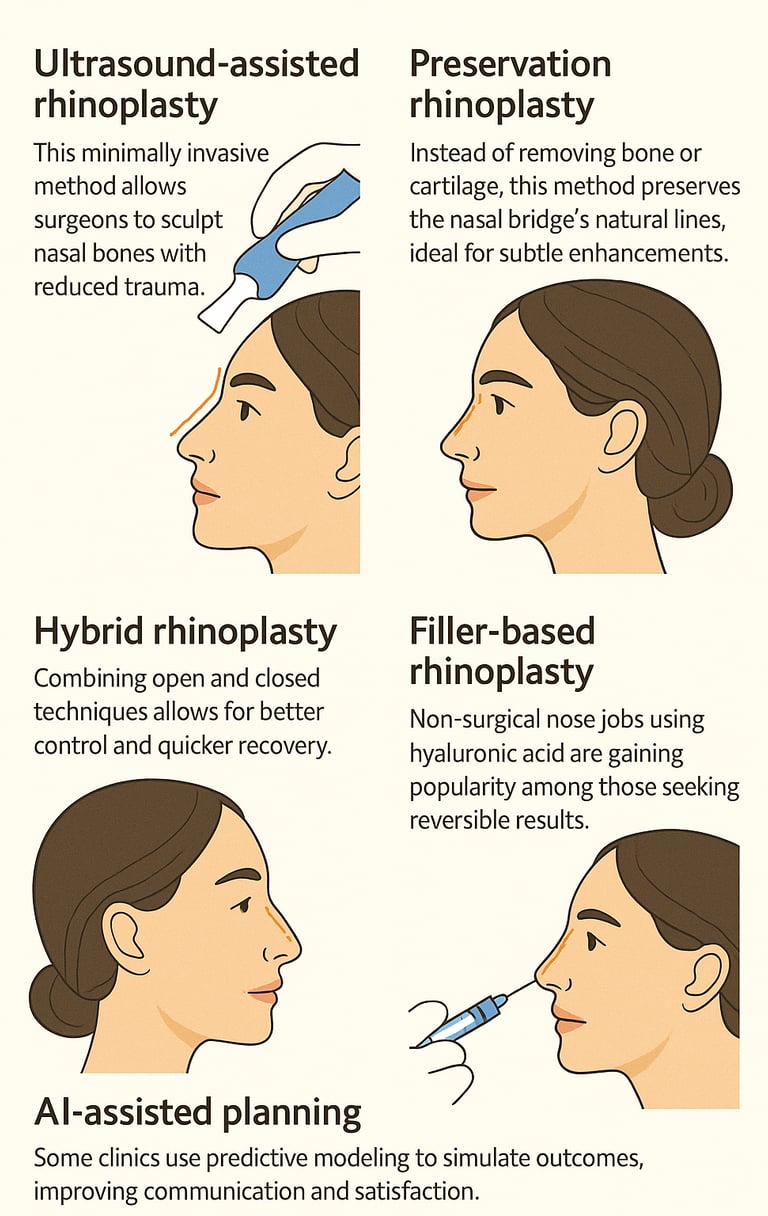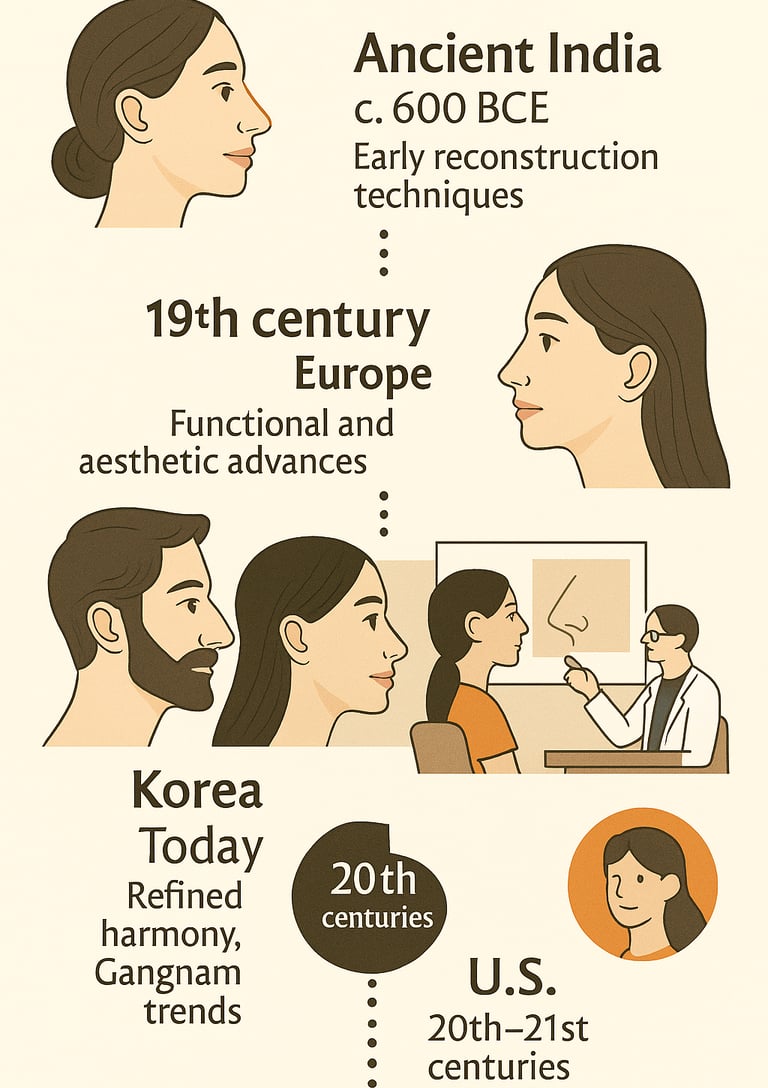Gangnam Rhinoplasty Trends 2025, Innovation, Elegance, and Global Influence
A deep dive into the past, present, and future of rhinoplasty, with Gangnam at the heart of 2025’s aesthetic innovation
HIMSSwire Manager
5/31/20253 min read


The History of Rhinoplasty
Gangnam rhinoplasty is more than a cosmetic trend. It’s a cultural phenomenon at the intersection of tradition, innovation, and global beauty standards. Once considered a niche procedure, rhinoplasty has become a global expression of beauty, identity, and confidence. From ancient texts to today’s algorithm-assisted designs, the journey of nose surgery reveals how culture and innovation intersect in unexpected ways.
Rhinoplasty has a surprisingly long and cross-cultural history. In ancient India, the Sushruta Samhita, written around 600 BCE, described early forms of nose reconstruction using skin grafts often after punishment-based amputations.
Techniques evolved over centuries, with notable advancements in 19th-century Europe as surgeons began to address both functional and aesthetic needs. By the late 20th and into the 21st century, rhinoplasty had become a recognized specialty across the U.S., Germany, and later Brazil, each contributing distinct methods and philosophies to the field.
Fast-forward to today, and rhinoplasty is not just common. It's a symbol of self-definition. In countries like Iran, nose surgery is seen as a rite of passage, while in Brazil, it’s part of a broader culture of body positivity through enhancement. Meanwhile, the United States emphasizes customization, with a growing interest in ethnic rhinoplasty that respects and refines patients’ natural features rather than reshaping them into a Western ideal.
In Asia, Korea leads the way, particularly in Gangnam, where medical infrastructure, artistic finesse, and cultural understanding converge. Rhinoplasty here is less about dramatic transformation and more about refined harmony. The global spotlight on Korean beauty standards, influenced by K-pop and social media, has helped propel Gangnam into a top destination for medical tourism.
Rhinoplasty (코성형) trends in 2025 and beyond
As techniques advance and patients become more discerning, rhinoplasty in 2025 is defined by precision and personalization. Key trends include:
Ultrasound-assisted rhinoplasty: This minimally invasive method allows surgeons to sculpt nasal bones with reduced trauma.
Preservation rhinoplasty: Instead of removing bone or cartilage, this method preserves the nasal bridge’s natural lines, ideal for subtle enhancements.
Hybrid rhinoplasty: Combining open and closed techniques allows for better control and quicker recovery.
Filler-based rhinoplasty: Non-surgical nose jobs using hyaluronic acid are gaining popularity among those seeking reversible results.
AI-assisted planning: Some clinics use predictive modeling to simulate outcomes, improving communication and satisfaction.
This evolution signals a broader shift away from uniform beauty and toward self-defined aesthetics.
Building rhinoplasty culture through smart strategy
The global rhinoplasty market surpassed $6 billion in value in 2024 and is projected to grow steadily through 2030. Clinics that thrive are those that engage patients with transparency, innovation, and education. In Gangnam, strategies include:
Detailed visual guides that show surgical techniques
Real-time Q&A sessions with board-certified surgeons on global platforms
Multilingual support across websites and consultations
Post-operative care services tailored for international visitors
Social proof plays an essential role. Testimonials and before-after galleries dominate decision-making, especially among international patients relying on online research.
Cultural diversity and market dynamics
According to the ISAPS Global Survey 2022, rhinoplasty remains the third most-performed aesthetic surgery worldwide. Iran leads in per capita surgeries. Brazil and the U.S. dominate in procedure volume, while South Korea despite a smaller population commands unmatched influence per capita, especially when it comes to patients from China, Vietnam, and the UAE.
Turkey and Germany have also emerged as competitive hubs, often offering bundled medical travel services. However, many patients continue to choose Korea for its high safety standards, aesthetic precision, and aftercare infrastructure.
The future of rhinoplasty
Looking ahead, the rhinoplasty field is expected to blend regenerative medicine, 3D printing, and biotechnology. Researchers are already experimenting with stem cell-enriched fat grafts and bioresorbable implants that adapt over time. As technology advances, so will the expectations for personalized, lasting results.
What remains constant is the demand for expertise that goes beyond technique. Patients are seeking care that reflects their individuality and respects their cultural context.
Gangnam’s role in this story is not incidental but it’s foundational. Its blend of medical excellence, beauty philosophy, and digital communication continues to shape what modern rhinoplasty means to people around the world.




